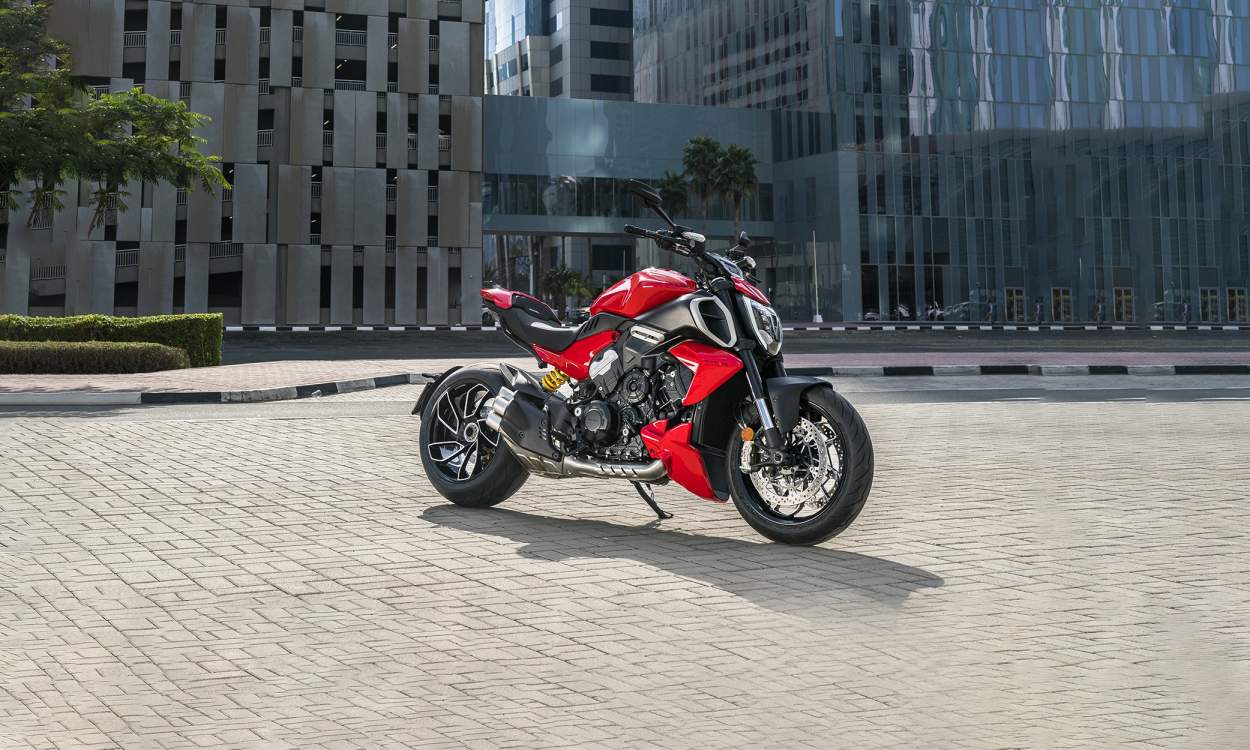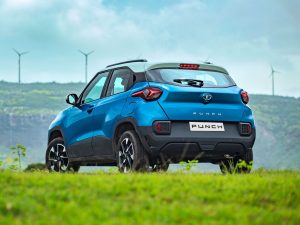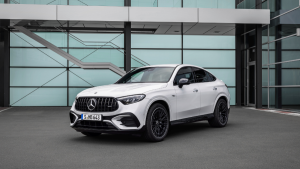The Diavel is one of the newest models in Ducati’s lineup, having only been available since 2011. However, during the last ten years, the bike has become a global Ducati mainstay and has continuously been among the brand’s best-selling models in India. The Diavel has undergone significant changes recently, the most significant of which being the switch to V4 power since this bike no longer has its classic L-twin motor.
Ducati Diavel V4 updated engine, 2024 modifications
The iconic steel trellis structure has also vanished, to be replaced with an aluminium monocoque unit. That’s why the bike weighs thirteen kilogrammes less than it did with the previous Diavel 1260, even if the 20-liter fuel tank now has three more litres. The end result is an easier-to-manage and more nimble motorbike, but the new powertrain is clearly the highlight of the show.
The new 1,158cc V4 motor is actually smaller than the previous 1,262cc L-twin, despite having two extra cylinders. Nevertheless, the bike now boasts 168 horsepower instead of 162 horsepower, and it also revs higher. Although there is a slight decrease in torque, the massive 126 Nm is still available at 7,500 rpm, just like with the previous twin.
Above all, the bike retains its Ducati-like feel. At low speeds, the motor trembles and tremors as you might anticipate, and the entire motorbike feels this way. Love them or loathe them, no other motorcycle has the same feeling as a Ducati, and the Diavel V4 perfectly embodies that sense of family.
Usability of the Ducati Diavel V4 in real life
However, Ducati has remarkably preserved a large portion of its unadulterated, visceral personality while still making the bike more manageable. The back bank is turned off by a new cylinder deactivation system, which also does so while the engine is running at a low speed. This really helps control engine heat, and despite being caught in a terrible traffic jam on my way to work this morning, I can attest that while the bike still generates a lot of heat, it’s much less unpleasant than it was in the past.
When using the lesser power settings, such as Urban or Wet, low speed fuelling is likewise incredibly mild and gentle—to the point of being unduly boring. I also discovered that when you ride in sluggish, bumper-to-bumper traffic, you can feel a little surge as the rear bank of cylinders kicks back in. Although it’s not too bad, you will notice it under certain riding conditions. If Ducati can improve it some more, it would be great. However, this is understandable because the Diavel isn’t really meant to be ridden in congested traffic and the fuelling is rather smooth beyond 3,000 rpm.
Speaking of which, this engine does complain when it is run on standard fuel; it does this by misfiring at low speeds and sporadic stalls. The suggested 95 octane gas, which is luckily now readily accessible and only costs a little premium over standard petrol, made it run considerably sweeter.
Ducati Diavel V4 ride quality and comfort
The Diavel is the finest large capacity Ducati I’ve rode in Mumbai, despite the fact that it was undoubtedly not designed with the craziness of an Indian city in mind. A portion of that can be attributed to the upright seated position that requires less forward stretching towards the handlebar than previously. All in all, the riding posture is still connected, muscular, and Diavel-esque, but it’s now somewhat more comfortable. You will, however, truly value the suspension.
The Ohlins fanciness from the 1260 S is gone from the V4, but that’s okay because the new Marzocchi/Sachs setup is much better on our roads. The rear wheel now has 15mm extra travel, for a total of 145mm, but it’s still completely adjustable and has 120mm of travel in the thick 50mm USD fork. As a consequence, the setup is still sturdy but feels more absorbent than you might anticipate—a pleasant sensation on Mumbai’s uneven, bumpy roads.
The bike will really make a good touring companion due to its general comfort and utility. The low oil cooler is the only area that requires ground clearance, but since it is so close to the front wheel, you should be fine if you exercise caution.
Handling of the Ducati Diavel V4
One advantage is that the bike seems lighter and is little simpler to ride today. Though manoeuvring the bike side to side still requires work due to the 240 section rear tyre’s weight and sluggishness, the Diavel’s dynamics have always been surprising and it is now much more nimble.
The chassis features a more angular set of proportions, with a somewhat steeper steering rake angle and lower wheelbase and trail. The weight reductions undoubtedly assist. Even though it’s still not a sportbike, a well-ridden Diavel can consistently outpace most bikes on a fast, flowing road. The best Brembo Stylema brakes available will also make sure you slow down as hard as this bike can accelerate.
Needless to say, but my goodness, the performance… Whoa. Once the engine reaches higher rpm, it smooths out wonderfully, and the charge towards the redline is so strong that you’ll be thankful for the substantial scooped seat that keeps you in place all the while. If you enjoy your bikes a little bit crazy, this powerplant is a piece of beauty and aggression and gives the Diavel a really appealing character.
Actually, I think that the 170 horsepower range is the sweet spot for large bike performance, and it’s far more pleasant to ride on than the 200+ horsepower supernaked nutters. This Monster engine could be something unique.
Ducati Diavel V4’s quality, design, and electronics
The standard array of Ducati technology is there to assist you as usual, and an amazing up-and-down quickshifter adds even more fun to the ride. The bike’s 5-inch TFT display, which is a respectable size, is another good feature. The design is the one thing I’m not quite sure about.
It still has some delightful touches, like as the quad exhaust tips and the multi-LED tail lamp, and is easily recognisable, but in other ways, it seems a little excessive and overdone. Additionally, there is simply too much plastic everywhere, and although it appears excellent up close, some of the plastic edges are jagged and poorly polished, which is absolutely not what you would expect on a bike this expensive.
Verdict on the Ducati Diavel V4
All costs are rising because to inflation, but Ducatis in particular appear to be becoming more and more expensive each year for the typical biker, and this one is no exception. It costs around Rs 1 lakh more than the 1260S and Rs 4.5 lakh more than the current basic Diavel 1260.
Depending on where you reside, you should prepare to spend up to 30 lakhs on the road. When you see the costs of Ducati’s approved accessories, you’ll feel even less happy. One especially bitter pill is that turn-by-turn navigation costs an additional Rs 8,113 for a software setup, even with the asking price.
Positively, valve clearance services are now at 60,000km, much like in the Multistrada V4, which was the engine’s original use. That resolves a very costly issue that was previously connected to Ducati ownership.
In the end, the Diavel has always been a very competent and statement motorbike; it may be a little bit of a poser, but it will strike you in the face if you call it that. The upgraded V4 succeeds in enhancing that personality and adding a more pleasurable and user-friendly feature set. And for that reason alone, it’s a pretty endearing motorcycle.






